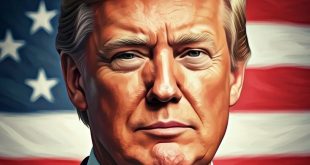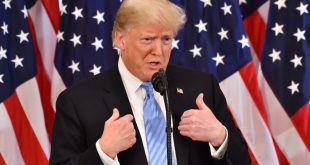Fed Chair Jerome Powell is scheduled to deliver his most important speech of the year, raising concerns that the Fed may have delayed relieving pressure on the economy. In July, following the central bank’s decision to maintain interest rates, Fed Chair Jerome Powell addresses reporters at a news conference.
Most Significant Speech Of The Year
Any clue about when the Fed will ease its monetary policy and lower interest rates is welcomed by the financial markets, government economists, companies, and households across the country. The most reliable indication yet may arrive this week when Powell gives what is expected to be his most significant address of the year on Friday morning. The general consensus among analysts is that the much anticipated rate decreases will start at the Fed’s September meeting. It remains to be seen, though, if central bankers—who may be concerned that the labour market is slowing down too much—will choose to drop rates aggressively or just by a more conventional quarter of a percentage point.
If Powell’s past performance is any indication, however, he is unlikely to provide much specifics. Rather, he will likely strive for well-considered statements that offer a multitude of choices. Fed officials are refocusing their attention on other areas of the economy that might start to falter due to the ongoing impact of high interest rates, which the central bank raised to counteract growing prices, now that inflation is declining to almost normal levels.
Only policy wonks and stock traders will often pay close heed to remarks made by Fed officials. But Powell’s speech this week carries a lot of risk because it’s unclear where the economy will go in the future.
At this point, the worries are actually about whether the job market is likely to get worse rather than just about inflation staying too high. There is now a far greater balance between the threats to the dual mission.
The Jackson Hole Economic Symposium, held annually in Grand Teton National Park, Wyoming, features a “who’s who” of central bankers and economists, with Powell’s address serving as the featured event. Powell and his allies have accomplished much in their efforts to stabilize the economy this time around: July saw the lowest amount of inflation since the spring of 2021. Customers are still making purchases, and the unemployment rate has stayed low. In terms of reversing price increases and sustaining growth in the face of high interest rates, the US tops its counterparts.
Rather than rejoicing, however, the Fed is battling critics who claim that by maintaining rates too high for too long, it has put the very stability that has characterized the economy since the pandemic at risk. Since July 2023, rates have been stable at a level between 5.25 and 5.5 percent currently. Weaker-than-expected jobs data this month fueled concerns that employers were pulling back, just days after the central bank decided against cutting interest rates. A risky trading day ensued, sending world markets plunging into the red. The weakest rate of wage increase since mid-2021 occurred in July, and the number of open positions has significantly decreased.
The economy produced 818,000 fewer jobs between April 2023 and March 2024, according to new data that officials are also juggling—this is the largest modification to government jobs data in 15 years. This simply increases the pressure on Powell to perhaps discuss how his view of the labour market is shaped by those revised numbers and on the Fed to lower rates.
Already, there has been a growing conversation among Fed officials about simultaneously addressing numerous risks. The two main responsibilities of central bankers are limiting inflation and promoting maximum job market expansion. It’s becoming more difficult to rebalance the dual-mandate seesaw after years of focusing on inflation.
Powell made the statement, “Go too soon, and you undermine progress on inflation,” on the timing of rate decreases during a July news conference. “You endanger the recovery if you wait too long or move too slowly. We must so strike a balance between those two things. It’s not an easy balance.
More and more analysts are of the opinion that the Fed has lagged behind the curve once more, similar to how it did during the initial surge in inflation in 2021. The concern is that, as the unemployment rate steadily rises, the unpredictability may intensify rapidly, with dire ramifications for both employees and companies.
The US economy has seen deterioration in the labour market and lower-than-expected inflation figures since that July meeting. They will need to make up for lost time. Powell has an opportunity to reassure people this week. Next month, there is going to move rather quickly. According to the latest FOMC minutes that were made public on Wednesday, “many” policymakers already saw a route toward a quarter-point reduction or said they might have supported it in light of inflationary pressures and a slow increase in the unemployment rate. It appears that some FOMC members already believed the job market had slowed down enough to justify a cut at the time of that debate, which took place a few weeks before the most recent revisions to the employment data and days before the release of the depressing July jobs report.
Financial markets and significant Wall Street corporations began to anticipate, following the unexpected July jobs data, that the Fed would lower rates by a half-point in September rather than the more customary quarter-point. Powell might also announce a series of quarter-point increases during the final meetings of this year in September, November, and December.
Presidential Election Question:
Although the Fed prefers to stay out of politics, a November cut would coincide with the presidential election. At Jackson Hole, at least, it’s unlikely that politics will be discussed officially, even as the DNC concludes in Chicago and the Trump campaign travels the nation appealing to voters with an economic message.
Fed governors breeze by political queries like they’re Olympic athletes. But who wins in November could drastically change their monitoring of the economy. Economists anticipate price increases as a result of GOP contender and former president Donald Trump’s plans for increased tariffs and mass deportations. Trump has also expressed his desire for greater presidential authority over monetary policy, which he has traditionally viewed as the Fed’s purview and free from political influence. While her Democratic candidacy stresses cutting costs for necessities, Vice President Kamala Harris’s populist policy platform might potentially fuel inflation by, for example, increasing housing demand.
 Noor Trends News, Technical Analysis, Educational Tools and Recommendations
Noor Trends News, Technical Analysis, Educational Tools and Recommendations





